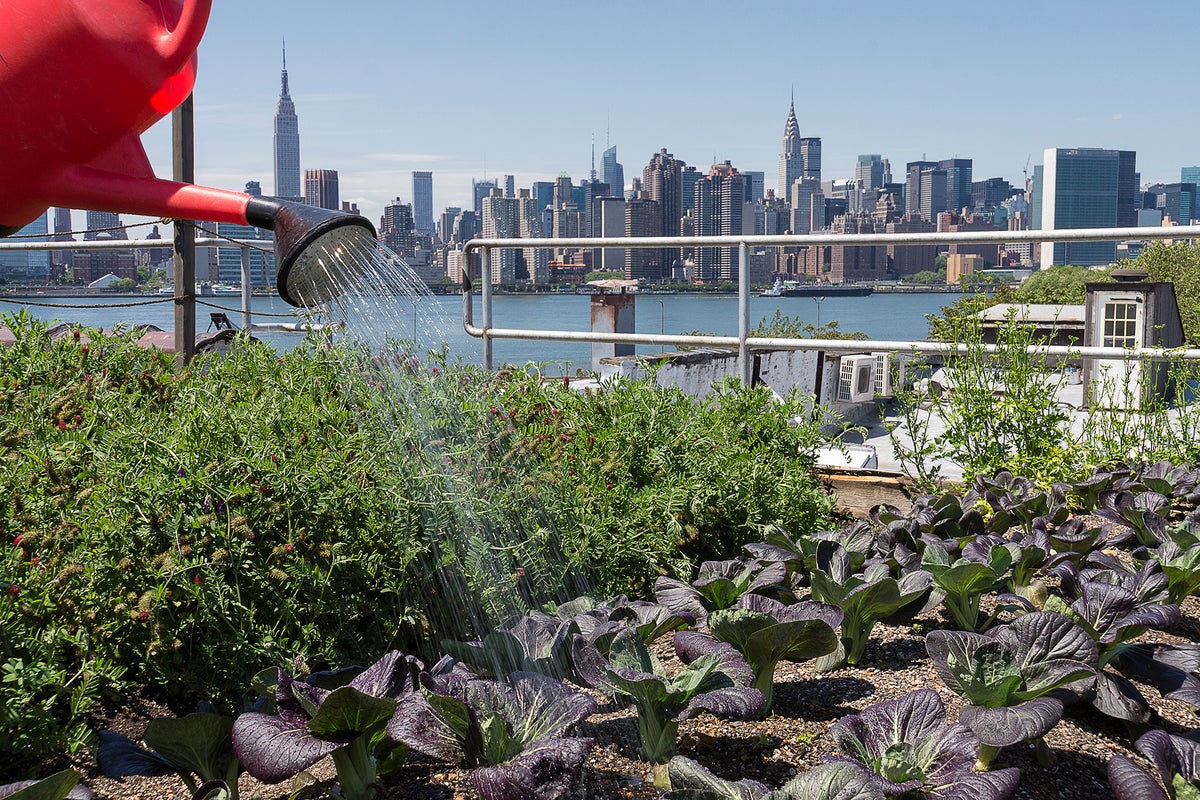8 Easy Facts About City Blooming Explained
Wiki Article
The Best Strategy To Use For City Blooming
Table of ContentsCity Blooming Fundamentals ExplainedA Biased View of City BloomingThe Only Guide for City BloomingThe Main Principles Of City Blooming The Only Guide to City Blooming
Intrigued in growing food available in the City of Chicago? Assuming about beginning a neighborhood yard? Changes to the Chicago Zoning Ordinance permit farming usages like area yards and city farms in numerous components of the city. Below is a checklist of often asked inquiries pertaining to the regulations and laws that farmers should think about when preparing a city agriculture project.
The zoning modification does not change any other codes dealing with composting, structure licenses, buying or leasing City possessed property, company licenses or ecological contamination. There are existing codes that control these concerns and they stay in complete impact and might apply to your task. Community yards are typically possessed or taken care of by public entities, public organizations or community-based organizations and preserved by volunteers.
Urban farms expand food that is intended to be marketed, either on a nonprofit or for-profit basis. Because of their commercial function, city farms require a business certificate. Yes. A community yard is allowed to offer surplus produce that was expanded on site if the sales are accessory or subordinate to the garden's main purpose defined above.
The Facts About City Blooming Revealed
Composting is allowed however just for plant product that is generated and used on website. The quantity of compost product can not go beyond 25 cubic yards at any given time according to the criteria in 7-28-715 of the City's Municipal Code. Yes. Since the dirt at the majority of brand-new yard sites requires modifying, compost, dirt, timber chips, or other materials can be acquired to construct or boost the growing room - landscaping.
If a structure authorization is called for then the hoophouse will be thought about an accessory structure. You can learn even more concerning the building authorization needs by calling the Division of Structures. The 25,000-square-foot dimension restriction is intended to stop a solitary community garden from controling an offered block or taking away from the block's existing property or business personality.
The limit does not apply to gardens located in Public Open Area (POS) districts. Can there be more than one area garden that is 25,000 square feet on a solitary block? Fence is not needed, nevertheless, gardens that have big vehicle parking locations might be needed to install fencing or various other landscaping attributes.
City Blooming for Beginners
B1 & B2 areas require that all business usage tasks be performed inside your home. R areas restrict commercial activity. The policies mirror the purpose and intent of the Zoning Code. Is fencing required for metropolitan farms? Yes. Fencings might be required, together with landscaping and testing, for sure car parking areas and exterior job or storage space locations depending upon place and the certain activity taking place.Yes. Urban ranches call for structure permits and zoning authorizations before construction. Various other forms of city testimonial might be required relying on particular structures, tasks, dimension, landscaping, licensing, public heath and stormwater monitoring issues. Many of these demands are determined in the project layout or permitting procedure, however, the applicant might be accountable to separately identify specific licenses or permits that may be called for.
The Division of Organization Matters and Customer Security can aid determine the specific type of service permit that's called for. Off road auto parking is needed for most commercial tasks in Chicago. The called for number of car park areas is based on the number of workers working on website and not the square footage of the growing space.
All About City Blooming

Yes. An urban farm can sell garden compost material created on website, nevertheless, the procedure must adhere to the guidelines in 7-28-715 of the Chicago Municipal Code. Yes. Aquaponic systems are enabled indoors on urban ranches in several zoning areas. Nonetheless, a zoning review and structure permit is called for in order to set up structures or systems and a company certificate is needed as defined above.
Up to five hives or swarms of honey bees may be maintained as an accessory usage. Beekeepers have to register with the Illinois Division of Agriculture. For more details regarding the recommended zoning amendment you may get in touch with the Division of Real Estate and Economic Development, Bureau of Preparation and Zoning at 312.744.8563.
Farming in cities and urban areas A metropolitan ranch in Chicago. Urban agriculture refers to numerous techniques of cultivating. https://www.mixcloud.com/cityblooming/, handling, and distributing food in city areas. The term additionally puts on the location activities of pet husbandry, aquaculture, beekeeping, and horticulture in a city context. Urban farming is distinguished from peri-urban farming, which occurs in rural areas at the side of residential areas.
The Ultimate Guide To City Blooming
, that seek to form social networks started on a common values of nature and neighborhood holism. These networks can develop by way of formal institutional assistance, coming to be incorporated right into regional town planning as a "shift community" motion helpful resources for lasting urban development.Some of the first evidence of urban agriculture comes from Mesopotamia.
Report this wiki page